 |
 |
 |
|
 |
|
 |
 |
|
 |
|
|
 |
|
|
|
 |
|
3.4. Truncating. When we also allow that the shape of the tiles changes during the transformation a few more possibilities can be added. One of them can be called truncation. An operation we all know from the field of polyhedra. |
|
|
 |
 |
|
|
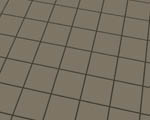 |
|
 |
|
 |
|
 |
|
|
|
Figure 9a: Squares
|
Figure 9b: Truncating
|
Figure 9c: Truncating
|
Figure 9d: Squares
|
|
| 3.5. Stellating. Also stellation is an operation more known as an operation on polyhedra. But we can use it on tilings as well. |
|
|
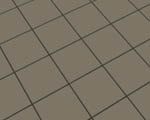 |
|
 |
|
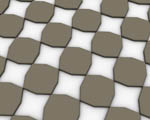 |
|
 |
|
|
|
Figure 10a: Squares
|
Figure 10b: Stellating
|
Figure 10c: Stellating
|
Figure 10d: Squares
|
|
| All these transformations have resulted in interesting animations. |
|
|
4. Other Tiling's
4.1. Archimedean. Of course we can start with many other basic tilings. When we limit ourselves to the Archimedean two colourable tiling’s there are four basic patterns that can be used.
|
|
 |
|
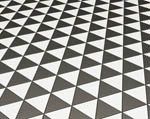 |
|
 |
|
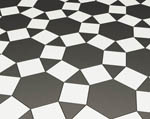 |
|
|
|
Figure 11a: 4,4,4,4
|
Figure 11b: 3,3,3,3,3,3
|
Figure 11c: 3,6,3,6
|
Figure 11d: 3,4,6,4
|
|
| 4.2. Polyhedra. But besides tiling patterns on the plane we can also start with tiling patterns on the sphere. In Figure 13a the five 2-colorable regular/semi-regular polyhedra are shown. Figure 12b is a drawing made by Wentzel Jamnitzer [3] in which you can see how you can generate a polyhedron with more faces using truncation. Starting with the dodecahedron Jamnitzer creates the icosidodecahedron (Figure 12b, first row, right) and from there the rhombicosidodecahedron (Figure 12b, first row, left). He even takes a next step by again truncating each of the faces (Figure 12b, second row, right). The result is not a semi-regular polyhedron anymore but it shows that you can go on with the process of truncation. |
|
|
 |
|
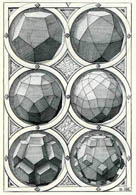 |
|
 |
|
|
|
Figure 12a: 2-colorable polyhedra
|
|
Figure 12b: Jamnitzer [3]
|
Figure 12c: Third truncation
|
|
|
 |
|
|
|
|
|
|
|
|
|
|
|
|
|
|
|
|
|
|
|
|
|
|
|
|














